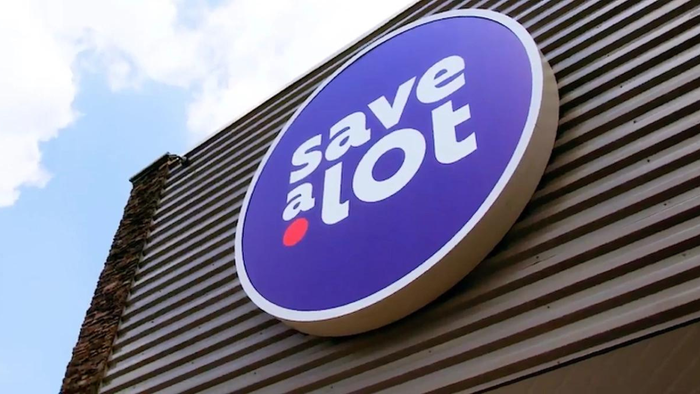Hopping down the seasonal aisle
January 1, 2018
Candy companies and other makers of Easter items are rolling out new products, promotions and packaging. By Nora Caley While consumers are just recovering from the Christmas rush, candy companies are gearing up for the arrival of the Easter bunny. Easter is the second biggest sales holiday behind Halloween, according to the National Confectioners Association (NCA), based in Washington, DC. Seasonal confectionery products make up about 25% of the total confectionery sales. This year there is a seven week spread between Valentine’s Day, another hot candy holiday, and Easter, providing extra time for promotion. “The additional time allows for extended merchandising for the season and even in a down economy the extended selling period creates an atmosphere for strong sales,” says Jenn Ellek, director of trade marketing and communications for the NCA. “The more marketing days in between major confectionery holidays, the better.” That was the case last year, when Easter was on April 12, a more favorable day than Easter 2008, which was March 23. Quoting IRI numbers, Ellek says some channels saw better sales increases than others. “Supermarkets rocked the sales with a 13.9% growth; drugstores 7.8% and mass merchants other than Wal-Mart declined slightly, down 0.4%.” Manufacturers say it helps that retailers are eager to move on to the next holiday. “The day Valentine’s is over they put in Easter products,” says Jim Schneider, president and CEO of Signature Brands, LLC, based in Ocala, Florida. “You don’t want empty shelves in the seasonal aisle.” Signature Brands offers PAAS egg decorating kits, as well as Betty Crocker and other licensed cake and cookie decorating kits. The products are often displayed near the Easter candy. Both holiday items are often last-minute impulse buys. “On PAAS approximately 60% of the retail consumption takes place within four days of Easter,” Schneider says. “On the decorating products, it was the week before.” According to New York-based The Nielsen Co., in supermarkets with sales of over $2 million, total candy sales for one week leading up to Easter Sunday totaled $151.4 million in 2009, an increase of 10.4% over the $137.2 million in 2008. For chocolate candy, sales were up 9.4%, from $96.3 million to $105.4 million. For non-chocolate candy, sales were up 12.6%, from $40.9 million to $46.1 million. Candy sales are up for the entire year. For the 52 weeks ended Oct. 31, in food/drug/mass merchandiser stores including Wal-Mart, sales of all candy totaled $10.7 billion, a 4.3% increase compared to the same period the year before. More selling time The extra time between Valentine’s Day and Easter also helps with sell through. Rob Auerbach, president of Candyrific, LLC, based in Louisville, Ky., says retailers remember whether they sold all of a manufacturer’s products. “If they bought 20,000 products and sold 20,000 they say, ‘Great,’ but if they ordered 40,000 and sold 30,000 they say, ‘That didn’t work so great,’ even though they sold 30,000,” he says. “The next year the judgment is based on the end game.” Vince Garabaldi, vice president of national sales for Fairfield, Calif.-based Jelly Belly Candy Co., says the company had great sell through last year. “It was the height of the financial crisis and a lot of folks were really worried about what was going to happen in the February-March-April timeframe,” he says. The holiday turned out to be a good one for retailers. “When we went back to visit, they said, ‘Remind me next year to bump my order up 6%. We were running out of product the Friday before Easter.’” The long span between Valentine’s Day and Easter helps drive incremental sales, says Sylvia Buxton, director of seasons for Hershey, Pa.-based The Hershey Co. “The early shopper is very valuable to retailers,” she says. “The shoppers are not thinking, I need to get my Easter candy, but they see the bright displays and they make impulse buys of candy, which will be eaten, and then they come back again late in the season and buy more.” She says Hershey’s Easter candy sales were good last year, even though retailers and consumers weren’t sure what to expect during the recession. “Easter seems resilient to the economy,” she says. “It’s the time of year of that feeling of hope and renewal. Consumers were feeling more positive and the use of money reflected in that.” Keeping it fresh It’s not enough just to have many candy shopping days. Manufacturers also have to provide consumers and retailers with something new to go with the longtime Easter staples. Bethlehem, Penn.-based Just Born, which recently opened a PEEPS store in National Harbor, Md., has added several products to its Easter line. They include PEEPS Chocolate Covered Marshmallow Chicks in individually wrapped packages and Orange PEEPS Marshmallow Bunnies in take-home packages. McLean, Va.-based Mars, Inc., which recently changed the name of its Mars Snackfood US operations to Mars Chocolate North America, is offering Dove Silky Smooth Milk Chocolate Peanut Butter Eggs and limited edition 3 Musketeers Dark Chocolate Raspberry Minis. The company also has new graphics on its Mixed Fun Size Filled Egg, which contains M&M’s and Skittles, and the Spring Minis Mix chocolates. Buxton says consumer research indicates that people tend to make baskets more for girls than for boys, so Hershey has a new Solid Milk Chocolate Princess Bunny. Also, there are new graphics and packaging for Hershey Bliss, Hershey Kisses and for the Cookies and Cream foiled wrapped eggs, which are all suitable for basket filling. “We are seeing consumers making some choices that bode well for confection,” she explains. “Consumers may choose to cut back on hard goods such as DVDs, iTunes cards, clothing and plush toys, and that becomes an opportunity to fill the basket with value items such as candy.” Retailers and manufacturers have to work together to make sure consumers spend money no matter what’s happening in the economy. “Many retailers in the last five years relied upon the growth of real estate around their stores and more people moving into the neighborhood,” Garabaldi says. “Now they don’t have that growth, so they have to find other ways to get money out of consumers when they are in their store.” He says sometimes retailers want to stock only the value brands. Jelly Belly, which offers premium candy, works with the stores to promote the beans alongside competitors’ discount offerings. Jelly Belly offers a direct store delivery program, or DSD, that creates a candy store within a store. The three- to four-foot section can be located inside the aisle or in shadow box configuration. Jelly Belly provides product and fixtures, and the retailer can include other, non Jelly Belly products in the section. Wide assortment “When the consumer walks into the store they end up seeing more quality, like in a gourmet store,” he says. “That allows the consumer to make the decision whether to buy cheap candy or premium candy, instead of the store making the decision for them.” The program works well in certain locations because of demographics. He adds that for Easter 2009, retailers that focused on a variety of gourmet and discount candies, not just value brands, saw double digit increases in sales in the non chocolate chewy category, because consumers ended up buying both products. Based on orders placed in November and December, sales will be up in 2010. Schneider projects PAAS business will be up 6.5% in volume in 2010. The medium and large kits account for about 70% of consumption. This year the company is offering new kits including Build A Basket, Coloring Creations, Egg Quarium, Mini Monsters and Neon. On the decorating side there are some new cookie icings, such as a fondant that hardens in ten minutes so the baker can stack the cookies. “You have to have something new all the time,” Schneider says. Signature Brands also offers a variety of floor stands, shipper displays, and PDQ trays for the PAAS egg decorating kits and for the cookie decorating products. Auerbach declined to offer numbers but said Easter 2010 will be a record one for Candyrific. The company sells licensed M&M’s and other products, such light up fans and novelty dispensers such as tins. “For Easter, M&M’s is the perfect mix,” he says. “We put bunny rabbit ears on the characters. Our seasonal business with Mars is excellent.” He makes sure retailers also stock bags of M&M’s on shelves below the dispensers. It’s important to keep items on the shelves after the holiday. Jelly Belly is running a promotion, Be The Big Bean, in which people can enter to win a trip to company headquarters and take a factory tour that includes sitting in chairman and CEO Herm Rowland’s office. The company is promoting the contest through its website and on specially marked packages, including the Easter packaging. The promotion will continue through July. Candyrific offers new items that are not necessarily Easter themed, such as dispensers featuring Miss Green or Mister Blue. Since they do not have bunny ears or pastel colors, these items can remain on the store shelves after the holiday. “That way, you don’t have to mark it down,” Auerbach says.
About the Author
You May Also Like




